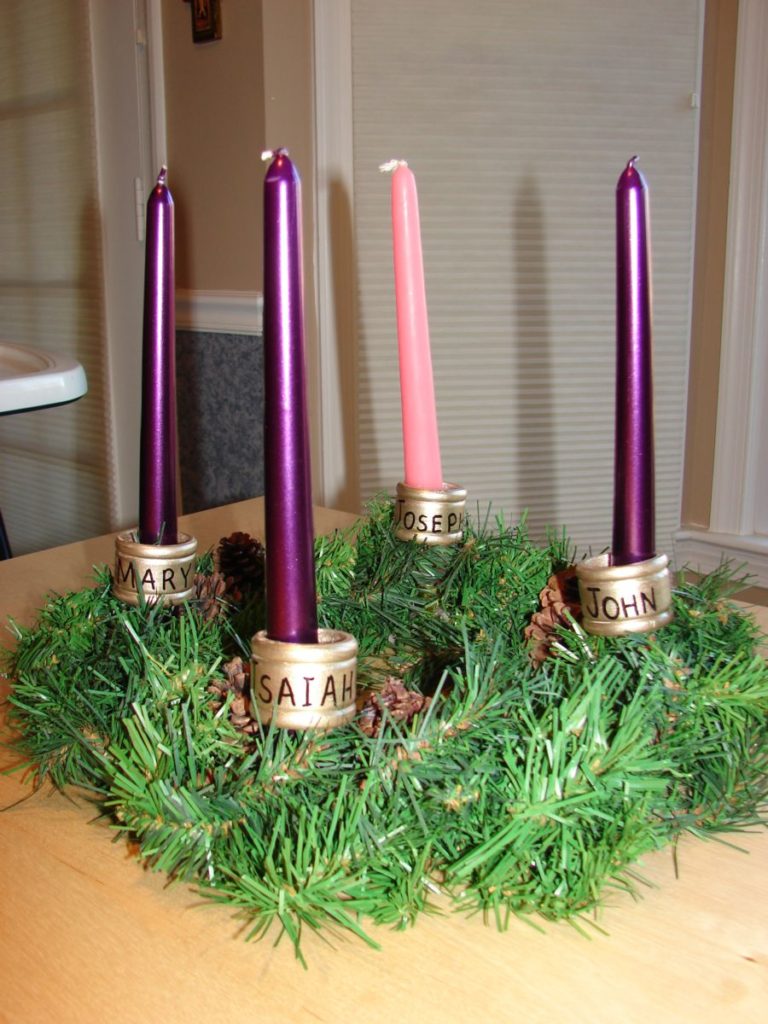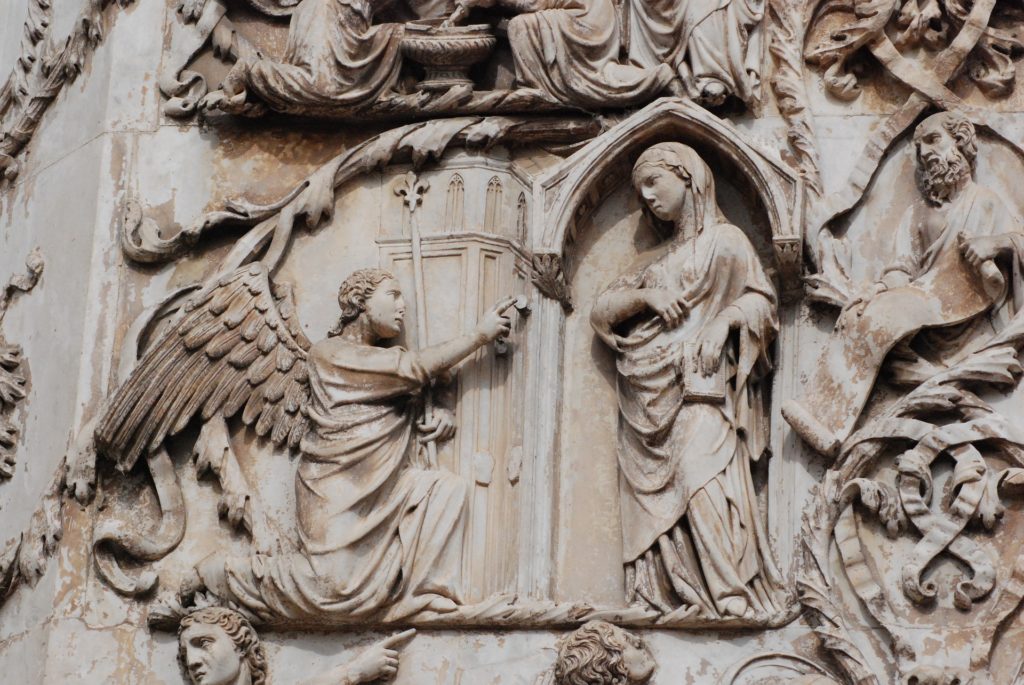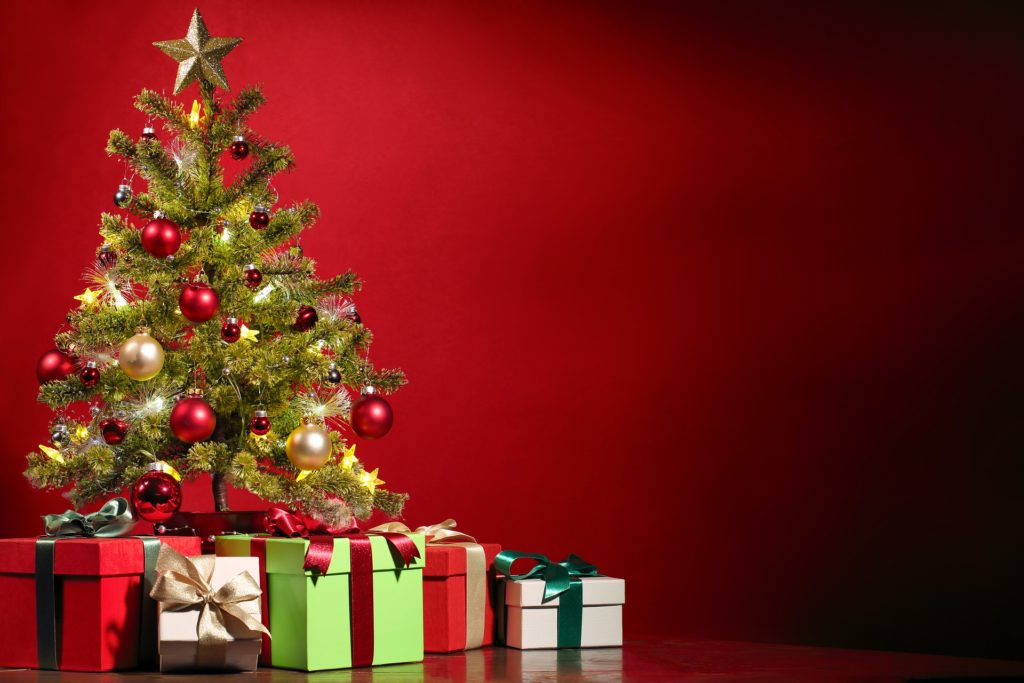Advent is a verb in the English dictionary that means “the arrival of a notable person, thing, or event” and comes from the Latin word for “coming”. Both these root meanings succinctly describe what Advent is for Christians. The season of Advent is celebrated by Catholic Church and by its Catholic believers the preceding four Sundays before Christmas Day (annually observed as a religious feast by the Catholic Church and a US National Holiday by the US Federal Government on December 25th). Most Christians celebrate the season in the same time frame and all Christians of the Eastern Rite Church hold the Feast Day of Christmas (whose more formal feast name is the Nativity of the Lord Jesus Christ) as the second most important holy mass of the year after Easter. For Catholics, the Season of Advent is part of the liturgical year.
The United States Conference of Catholic Bishops (USCCB) describes Advent as the:
Beginning the Church’s liturgical year, Advent (from, “ad-venire” in Latin or “to come to”) is the season encompassing the four Sundays (and weekdays) leading up to the celebration of Christmas.
The Advent season is a time of preparation that directs our hearts and minds to Christ’s second coming at the end of time and also to the anniversary of the Lord’s birth on Christmas. The final days of Advent, from December 17 to December 24, focus particularly on our preparation for the celebrations of the Nativity of our Lord (Christmas).
Advent devotions including the Advent wreath, remind us of the meaning of the season. Our Advent calendar above can help you fully enter in to the season with daily activity and prayer suggestions to prepare you spiritually for the birth of Jesus Christ.
More Advent resources are listed on the web site of the USCCB here.
The Catholic Liturgical Year ends with the religious feast called the ”
Solemnity of Our Lord Jesus Christ, King of the Universe“. This feast day is celebrated the prior Sunday before the First Sunday of Advent. It used to be called the “Feast of Christ the King” and is the last Sunday of Catholic liturgical year. This year that Feast fell on November 24, 2018. This feast celebrates the end of the Church’s liturgical year and reflects upon the Catholic belief that Christ will come again as judge of people and savior of all faithful believers of Jesus Christ at the end of time. It also reminds Catholics of the coming Season of Advent and all Christian believers of beginning their journey back to Christ the Lord spiritually on the Feast of the Nativity, as well as, at time of our mortal deaths. The spiritual journey of this renewal with Christ takes place throughout Advent through several Feasts within the season.
In 2018, the First Sunday of Advent falls on December 2, 2018. At this mass the Advent Wreath is blessed and the first candle lit. This begins the new Catholic Liturgical Year and starts the Season of Advent. Catholic believers prepare their hearts spiritually for the season and celebrate the first light of Christ returning to the world. Each succeeding Sunday of Advent another candle is lit symbolically showing how the light of Christ grows throughout the Advent season culminating at the last Sunday of Advent before his birth on Christmas. As the USCCB says “The progressive lighting of the candles symbolizes the expectation and hope surrounding our Lord’s first coming into the world and the anticipation of his second coming to judge the living and the dead.”
On December 8th annually the Solemnity of the Immaculate Conception is celebrated by the Catholic Church. This feast is nine months before the feast of the Nativity of Mary, which is celebrated on September 8th. Symbolically these nine months represents the time Jesus Christ spent in the Virgin Mother’s womb. The Immaculate Conception itself celebrates the day Mary the Mother God accepted the Lord our God’s invitation to be the mother of our Lord Jesus Christ through Gabriel offering her the chance to be with child without ever knowing sin. Mary willingly and immediately accepts despite her own fears, as well as, knowing this will complicate her pending marriage to her fiance Joseph– not to mention bring upon the ridicule of her community who will not accept the miracle as real despite it being so. The Feast is a Holy Day of Obligation, which means all Catholics are required to attend the mass. While not honoring Holy Days of Obligation is not necessarily a sin it is understood by the USCCB that not attending these masses limits ones ability to grow in holiness and maintain their faithfulness to the church. There are currently ten days of Holy Obligation in the Catholic Eastern Rite. Therefore it is encouraged to attend Holy Days of Obligation as it is something Catholic believers should yearn to want to do and not something we do because we “have to”. Growing to “want to” is part of growing in holiness and comes directly from Grace through our Lord Jesus Christ. Obtaining that Grace, which can only be granted by Lord Jesus, results from “being there” at mass and honoring God’s holiest days.
The Third Sunday of Advent celebrates the half way point of the season and is referred to as “Gaudete Sunday”. The third rose colored candle of the Advent Wreath is lit during this mass. As the USCCB says:
The purple candles in particular symbolize the prayer, penance, and preparatory sacrifices and goods works undertaken at this time. The rose candle is lit on the third Sunday, Gaudete Sunday, when the priest also wears rose vestments at Mass; Gaudete Sunday is the Sunday of rejoicing, because the faithful have arrived at the midpoint of Advent, when their preparation is now half over and they are close to Christmas.
The third Monday after the Third Sunday of Advent is an Annual Day of Atonement. On these days of Atonement the Sacrament of Reconciliation is offered through Confession. Annual days of Reconciliation are offered twice a year by the Catholic Church– once during Lent as we prepare for Easter and once during Advent as we prepare for Christmas. You can read our Confession 101 Refresher article if you would like a refresher about how Reconciliation works and why it is an important Sacrament for all Catholic believers to participate in. By clearing ourselves of the burden of our sins and by inviting Christ’s forgiveness into our lives, we can truly spiritually prepare ourselves for the coming of Christ back into our lives during Advent and celebrate his birth into this mortal world with a birth of a spiritual newness in ourselves– a spirit newness that is obtain through the Act of Reconciliation. This is why it is important to participate in Confession. Check your local Parish or a nearby Parish (you can go to any Catholic Church you wish to for Reconciliation) for their schedule of Confessions. This year Advent Reconciliation Monday will be held on December 17, 2018. In the Archdiocese of New York, all Churches will hear Confessions between 4 pm and 6 pm EST.
Between December 16th and 24th, many Hispanic Churches in the United States and throughout Mexico, Central America, and South America will celebrate “Las Posadas.” This is a time of reenacting Mary and Joseph looking for a place to stay in Jerusalem. Many other Churches throughout the World will hold Living Nativities and also reenact the story of Jesus’s birth. Some Religious Education programs hold Nativity reenactments within the Church or a Church Hall. The Church of the Infant Saviour (our Council’s Parish in Pine Bush New York) has done this in the past. These celebration are not official masses or even services, but they do give us a visual reminder of what we as Catholics are celebrating– our Lord Jesus Christ entering the world so humbly and meekly by choice in order to save us from sin and death. Nativity reenactments symbolically are a reflection of who Jesus Christ was, is, and always will be– a servant king who sacrifices continually and invites us gently to serve and be served through his love, forgiveness, and saving Grace. This is the underlying nature of true love as shown by Jesus Christ– a model all Christian believers should embrace as “who they want to be” even if sometimes it is hard to remember that is who we really are inside. The Nativity though reminds us of this and shows us our Lord Jesus Christ as who he really is.
The Fourth Sunday of Advent the final candle of the Advent wreath is lit. Catholic Churches and the Catholic believers worldwide begin readying for the coming Christmas celebration by celebrating the end of the Advent Season and preparing for the Christmas season (the next part of the Liturgical year).
The liturgical Christmas season begins on December 24th on Christmas Eve. Christmas Eve also is called the Vigil of the Nativity of the Lord Jesus Christ and a Christmas Vigil Mass is offered by the Catholic Church. This mass focuses on the preparation of all Catholic believers for coming of the Lord Jesus Christ. Jesus Christ coming into the world through his birth is a major celebration for the Church and remembering Jesus Christ’s humble origins as our Savior in the manger reminds us that all great things begin very small and fragile– as the Lord did in the form of a mortal infant in the manger. Likewise our faith begins very small and grows over time as we exercise our faith.
On Christmas Day (December 25th) is the Nativity of the Lord Jesus Christ Mass. Usually several masses are offered this day. All these Masses focuses on the story of Jesus Christ’s birth in the world and how humble shepherds, a class of worker that in Jewish society at the time was not looked upon highly and would best be equated to the manual laborers of today, were the first to recognize Jesus as the Christ the Lord and respond so willingly to the invitation of the Archangel Gabriel to worship the Lord in his manger. Once again you can check your local Parish web site for mass times. Attending either the Christmas Vigil or Day mass counts as meeting your obligation for the Feast Day. Feel free to attend either one or if you wish both. Each offers its own unique way to celebrate the joyous birth and fulfillment of God’s promise to give us a perfect savior, a new Adam that was free from sin and offer himself as a sacrifice to conquer death bringing all Catholic faithful believers the chance to have eternal life in the Father’s Heavenly Kingdom.
Advent is truly a wonderful season that leads us to Christmas and back to Christ. If you have not been to mass in some time it is a great time to renew yourself by doing so. For just like the Nativity, all great Faith Journeys begins in small fragile things. Begin your journey to return home to Christ today by attending mass this Advent season. The Lord is waiting– will you come and worship “For to you is born this day in the city of David a Savior, which is Christ the Lord.” (Luke 2:11)?





You must be logged in to post a comment.